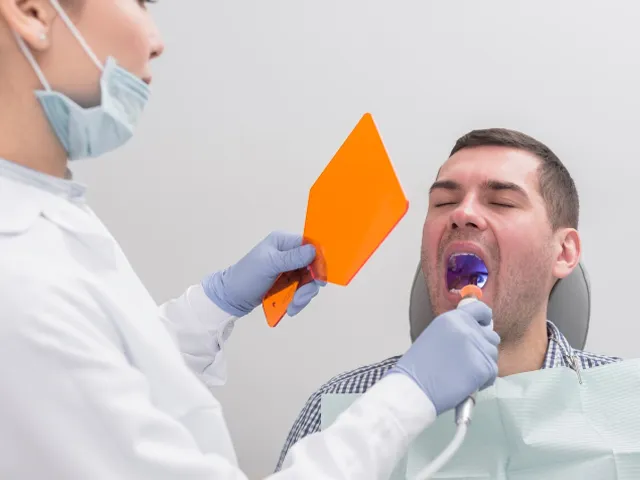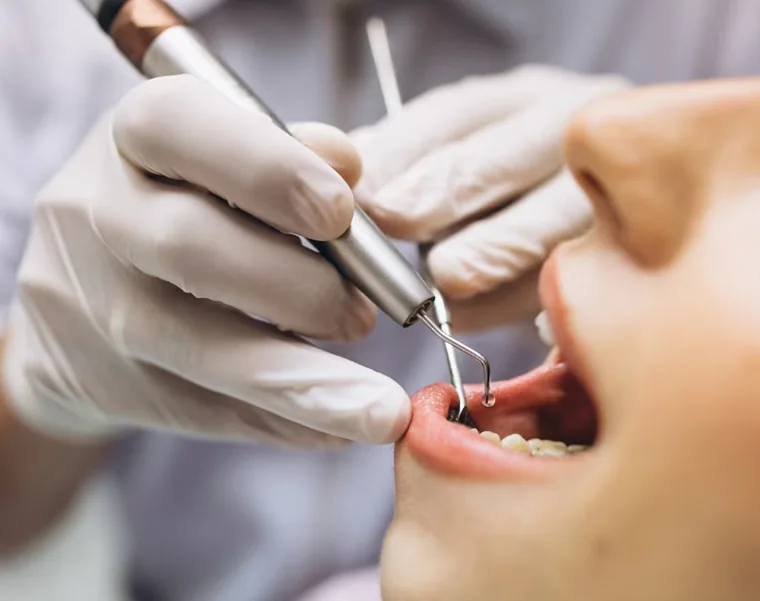Gum treatment refers to treatment methods for gum diseases. These diseases are inflammation and infections of the gums, usually caused by the accumulation of bacterial plaque. The treatment process varies depending on the stage and severity of the disease.
Gum treatment methods vary depending on the severity of the disease. Mild cases can usually be managed with regular professional dental cleanings and improved home care. More serious cases may require deep cleaning procedures such as scaling and root planing. Sometimes antibiotic treatments and surgical interventions may also be necessary.
Surgical procedures are performed to clean gum pockets, repair bone structures and encourage the growth of healthier gum tissue. In each case, treatment requires an individualized approach and the treatment plan is tailored to the specific needs of the individual.
How is Gum Treatment Performed?
Treatment of gum diseases is handled under the discipline of Periondontology, a specialized field in modern dentistry. These treatments include methods to prevent and treat problems such as recession.
The answer to the question “Why does discomfort in the gums cause?”, often varies depending on the accumulation of bacterial plaque and the oral care routine. Factors leading to recession include harsh brushing, genetic predisposition and certain diseases. The resulting problems can lead to both aesthetic and functional problems.
And what methods are involved in this process?
Before starting treatment, the dentist determines the level of disease by performing a series of examinations and tests. Scaling is the first step in the treatment. This procedure aims to remove hardened plaque on and under the tooth surface. In periodontal some cases more advanced treatments may be needed.

Laser treatment is a new and effective method of treating dental diseases. This method allows precise removal of infected tissue and regeneration of gum tissue. After the operation, which is performed under local anesthesia, patients usually have a quick recovery period.
Orthodontic treatment can also play a role in healing the gums. Properly aligned teeth facilitate cleaning and reduce plaque build-up. Thus, it helps prevent diseases.
How Long Does Gum Treatment Take?
The treatment process varies depending on the severity of the disease. In addition, the general oral health of the person is also decisive on the duration of treatment.
In the case of mild gingivitis, treatment may take a few weeks. However, in more advanced cases, it can take up to several months. The important thing is to consult a dentist to make the correct diagnosis and determine the appropriate treatment plan.
Treatment involves a variety of methods to repair the damage caused by the disease and stop its progression. These include professional cleaning, medication and, in some cases, surgery.
A good oral care routine and flossing are important steps for home treatment. Flossing is effective for removing food and plaque between the teeth and below the gum line. To use floss regularly plays an important role in the prevention of dental diseases. These conditions are treatable, but early diagnosis and treatment are important.

When dental problems are left untreated, they can result in gum recession, which can lead to tooth loss. It can also lead to social problems such as bad breath. Therefore, regular dental check-ups and good oral care are important for maintaining oral and dental health.
For questions and detailed information about oral and dental health, please contact Libredent.











